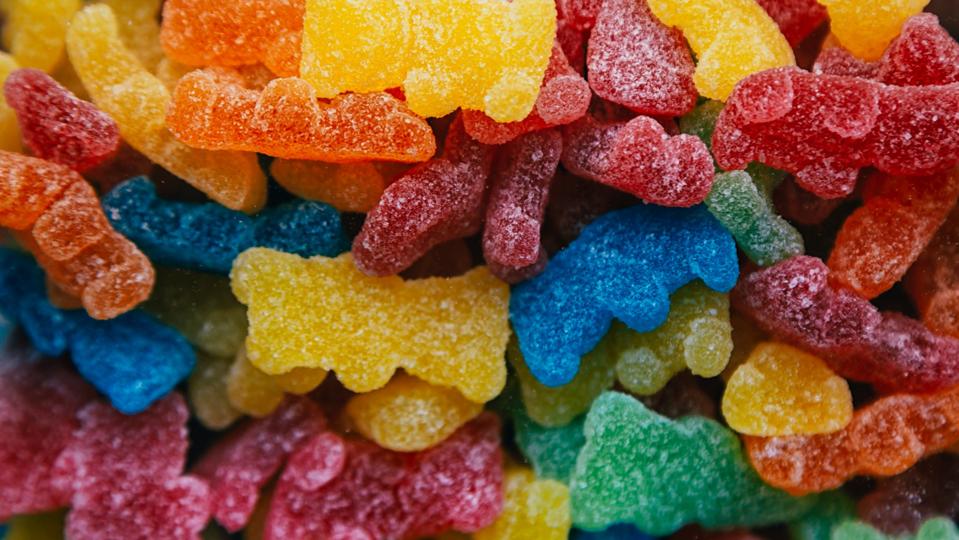The FDA recently announced its plan to phase out petroleum-based synthetic food dyes, including familiar staples like Red 40 and Yellow 5. These ingredients have been under scrutiny for decades, but this marks a more definitive shift: a move away from the bright, artificial colors that have defined a generation of American processed foods.
The timing brings the U.S. closer to countries like those in the European Union, where synthetic dyes have been restricted or replaced for years. In the U.S., they lingered—less because they were needed and more because we were used to them.
We Clung to Color Long After Others Let Go
Most Americans probably didn’t feel much when the news broke. Synthetic dyes were never about improving our health, and their removal won’t make food taste any different. But they’ve always done something else—something louder. They made food look like fun.
The U.S. didn’t just tolerate hyper-colored snacks and cereals—we built an entire visual food culture around them. The brightness wasn’t incidental. It was the point. From red popsicles and penny candy to purple sports drinks and rainbow swirls of processed cheese crackers, we learned to associate artificial color with flavor, excitement, and even safety. It told us the food was fresh. That it was tasty. That it was for us.
And because those signals were visual, they became habits—repeated, reinforced, and easy to trust. Bright colors still cue sweetness, indulgence, and familiarity in the grocery aisle. We didn’t hold onto them because we needed them. We held onto them because they worked.
How Color Trains Us
A 2022 review in the Journal of Food Science explains that color does more than catch the eye—it teaches us what to expect. If something’s red, it should taste like cherry. If it’s neon, it should be sweet. Bright colors don’t just grab attention—they shape expectations. They signal indulgence, fun, and flavor before you even take a bite. That’s part of why reformulated products using natural dyes—duller, less stable, and often less familiar—can feel off, even when the taste is the same. That mismatch isn’t just visual. It disrupts what we’ve been trained to trust.
Grieving an Illusion
As historian Ai Hisano documents in Visualizing Taste, the rise of synthetic food dyes wasn’t just about manufacturing—it was about creating a new visual language for food. Bright, uniform colors made processed foods stand out on crowded shelves and helped cement brand recognition. But more than that, they taught consumers what “good food” was supposed to look like. That training started early and stuck.
Especially in the postwar era, when grocery stores went self-serve, and packaging became the first salesperson, color became a tool of trust. Parents reached for what looked familiar. Kids gravitated to what looked loud. And that brightness became a kind of emotional shorthand—something we didn’t need to question.
Now, with dyes being phased out, the foods aren’t necessarily disappearing. But they won’t look the same. And they won’t hit the same.
Treats, Color, and Cultural Pullback
For more than half a century, artificially dyed foods weren’t just part of the American diet—they helped define how multiple generations learned to recognize fun, flavor, and familiarity. Every era had its own version of edible brightness.
In the 1960s, dyes like Red 2 and Yellow 5 colored everything from sweet drinks to hard candies. By the 1970s, food dyes were baked into school lunches, holiday treats, and frozen desserts. In the 1980s and 1990s, color reached a peak: fruit snacks, candy coatings, neon yogurts, and boxed snacks weren’t just encouraged—they were engineered to stand out. Kids didn’t have to read the label. The colors said enough.
These foods weren’t accidents of the market. They were intentionally designed to look bold, especially to children. That was the appeal. And as long as the dyes worked—cheap, vivid, and shelf-stable—they stayed.
So when the National Confectioners Association responded to the FDA’s regulatory shift by emphasizing that candy is “just a treat” and that synthetic dyes are safe, the comment made sense. But it also missed the point.
“FDA and regulatory bodies around the world have deemed our products and ingredients safe, and we look forward to working with the Trump Administration and Congress on this issue,” said Christopher Gindlesperger, senior vice president of public affairs and communications at the National Confectioners Association. “We are in firm agreement that science-based evaluation of food additives will help eliminate consumer confusion and rebuild trust in our national food safety system.”
That statement focuses on scientific legitimacy and policy alignment. But the broader shift underway isn’t just about compliance—it’s about culture. The question isn’t whether people will still eat candy. It’s how people are starting to look differently at the things they once didn’t question.
A Quiet Loss
While the phase-out of synthetic food dyes is being driven by public health and regulatory concerns, it also marks a subtle shift in the cultural landscape—a soft loss. As scholars of cultural continuity like Chandler and Lalonde have written, when shared symbols begin to fade, communities often experience a quiet sense of disconnection. Not a crisis. Just a small signal that something familiar is slipping.
Brightly colored foods were never just about flavor. They were emotional and visual shortcuts—touchstones that helped define childhoods, holidays, and habits. Their disappearance won’t leave a hole. But it will leave a different kind of silence.
That doesn’t mean this change is wrong. It means it’s layered. The color was never necessary. But the attachment was real.

